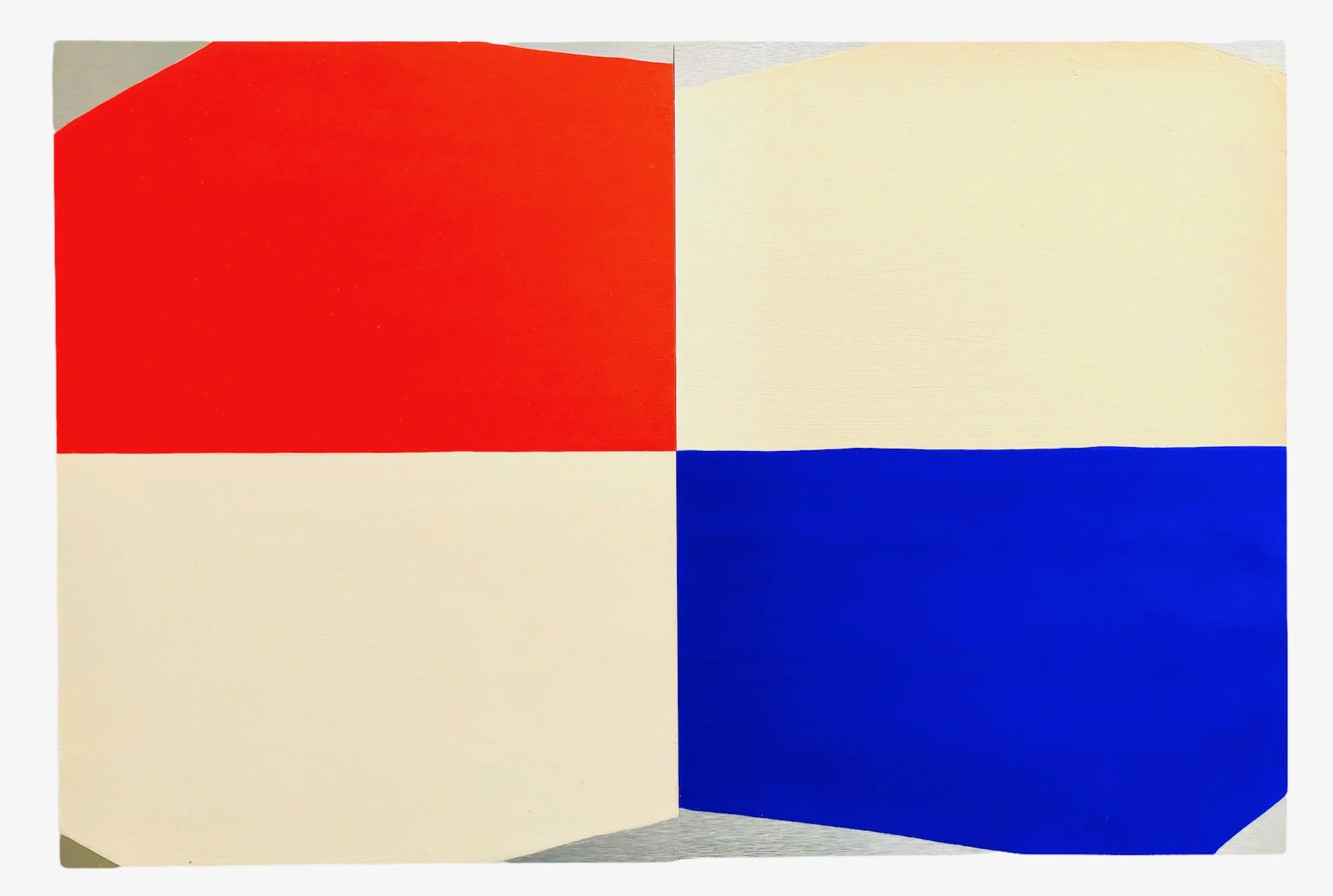From Gesture to Geometry
From Gesture to Geometry
Platform A Gallery presents From Gesture to Geometry. The practice of non-objective painting that erupted in the early 20th century was soon divided into two camps; gestural abstraction, that built upon the loose compositions of the post-impressionists, and geometric abstraction, that was inspired by Euclidean geometric shapes and rejected the notion of gesture and the trace of the artist’s hand.
The opposing lineages of both the refined vocabulary of geometrically organised forms and the painterly gestural signature of the artist remain today and reflect a deeper philosophical understanding of human behaviour.
This exhibition revisits the conversation to explore the contemporary attitudes of artists from both factions and of those who use both approaches.
Rachael Clewlow // Sarah Cooney // Lorraine Lawler // Ulla Pedersen // Theresa Poulton // Francesca Simon
Events:
Artist Talk
Saturday 24th September 1-2 pm
In conversation event with artists Lorraine Lawler & Theresa Poulton.
Join us at Platform A Gallery for a discussion between artists Lorraine Lawler & Theresa Poulton around gesture and geometry in non-objective painting.
Find our Facebook event for this Artist Talk here.
-
Open Studios | Platform Arts Stuidos
Sunday 25th Sep 12-4pm
Entrance through Platform A Gallery.
Find our Open Studios Facebook event.
Platform-A Gallery
Middlesbrough Railway Station
Zetland Road Middlesbrough, TS1 1EG
Telephone: 01642 252 061
Email: info@platformagallery.ne
www.platformagallery.net
Entrance to the gallery. Due to the closure of the main entrance of the train station acess to the studios will be through Platform A Gallery. Please enter from the back of the train station (entrance to Platform 2) and walk through the tunnel to get to Platform 1.
*This entrance to the studios are not accessible to all please contact us before to arrange a safe entrance if needed. Gallery is accessible for all.
Rachael Clewlow
Rachael Clewlow
Rachael Clewlow takes so called abstraction to the realms of visceral experience as the viewer physically reacts to the meticulous application of paint and is drawn in by the visual effects she creates with shape and line. Through painting and printmaking, Rachael Clewlow has created a visual language that reflects an obsessive attention to detail and a desire to map out her own experiences of the world.
Instagram: @rachaelclewlow
Find out more here
Sarah Cooney
Sarah Cooney
Sarah Cooney’s painting occupies its own internal sense, nuance and rhythm. Cooney orchestrates subtle ranges of colour, texture and lyrical gesture, extending a vocabulary of marks and motifs that echo across bodies of works. Painterly revisions accumulate on the canvas alongside traces of provisional marks rubbed away- in a process of sense making.
Lorraine Lawler
Lorraine Lawler
Lorraine Lawler expresses a moment or a concept, broken down into a minimalist or gestural motif and forms a conversation between line and form, and how they interact. She seeks to understand, or perhaps question this as a language without words.
Instagram: @lorrainelawler7012
Ulla Pedersen
Ulla Pedersen
Ulla Pedersen is a Danish abstract artist. Her work is a minimal and concrete exploration of colour, materiality, form, and balance. Pedersen works with acrylic paint on many different surfaces, including canvas, wood, paper, cardboard, plastic, and aluminium. Her process is reductive. When painting a composition, she tends toward a limited colour palette, often reducing the composition to minimal, hard-edged shapes on solid-coloured fields.
Instagram: @u_pedersen
Find out more here
Theresa Poulton
Theresa Poulton
Theresa Poulton is a hard-edged, abstract, geometric painter making illusory environments of contrasting colour and distorted perspectives. She exaggerates the sense of depth and space by use of line, shape and form.
Francesca Simon
Francesca Simon
Francesca Simon displays an instinct for geometry and pattern-making, combined with a fascination for three-dimensional effects worked onto the flat plane of the support. A smooth flatness necessarily requires a particular method of working: there is a need to organise in advance and spontaneity cedes to calculation and precision.








